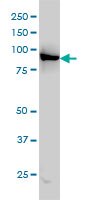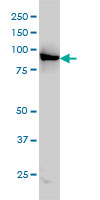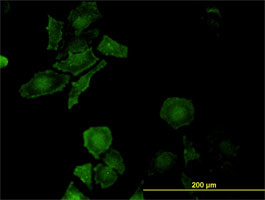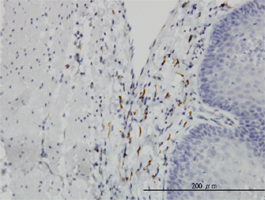ST1622 Sigma-AldrichAnti-LEPRE1 Mouse mAb (3C7)
This Anti-LEPRE1 Mouse mAb (3C7) is validated for use in ELISA, Immunoblotting, Immunocytochemistry, Paraffin Sections for the detection of LEPRE1.
More>> This Anti-LEPRE1 Mouse mAb (3C7) is validated for use in ELISA, Immunoblotting, Immunocytochemistry, Paraffin Sections for the detection of LEPRE1. Less<<同義語: Anti-Leucine Proline-Enriched Proteoglycan 1, Anti-Leprecan 1
お勧めの製品
概要
| Replacement Information |
|---|
主要スペック表
| Host | Antibody Type |
|---|---|
| M | Monoclonal Antibody |
価格&在庫状況
| カタログ番号 | 在庫状況 | 包装 | Qty/Pk | 価格 | 数量 | |
|---|---|---|---|---|---|---|
| ST1622-100UGCN |
|
100 μg |
|
— |
| References | |
|---|---|
| References | Choi, JW, et al. 2009. PLoS Genet. 5, e1000750. Cabral, W,A., et al. 2007. Nat Genet. 39, 359. |
| Product Information | |
|---|---|
| Form | Liquid |
| Formulation | In PBS, pH 7.2. |
| Positive control | HeLa cells, Human esophagus tissue |
| Preservative | None |
| Quality Level | MQ100 |
| Physicochemical Information |
|---|
| Dimensions |
|---|
| Materials Information |
|---|
| Toxicological Information |
|---|
| Safety Information according to GHS |
|---|
| Safety Information |
|---|
| Product Usage Statements |
|---|
| Packaging Information |
|---|
| Transport Information |
|---|
| Supplemental Information |
|---|
| Specifications |
|---|
| Global Trade Item Number | |
|---|---|
| カタログ番号 | GTIN |
| ST1622-100UGCN | 04055977223699 |
Documentation
Anti-LEPRE1 Mouse mAb (3C7) (M)SDS
| タイトル |
|---|
参考資料
| 参考資料の概要 |
|---|
| Choi, JW, et al. 2009. PLoS Genet. 5, e1000750. Cabral, W,A., et al. 2007. Nat Genet. 39, 359. |










